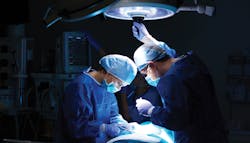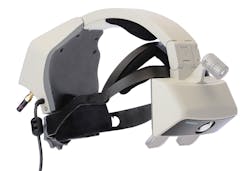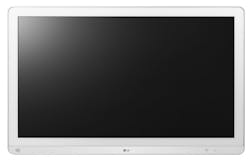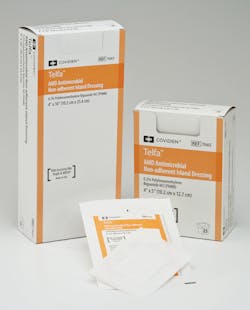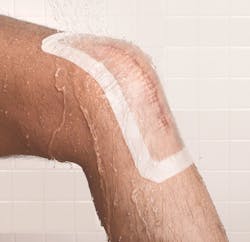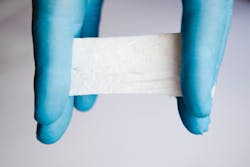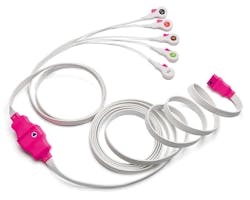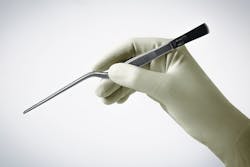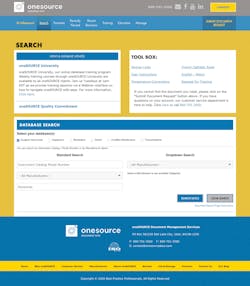Surgical care continues to elevate to new heights with advanced instruments, supplies and technology. Today, many innovations raise the level of accuracy, speed and safety of procedures that help save lives and improve health of patients. In this article, we look at the latest trends and products in surgical practice.
Advancing surgical technology
Equipping surgeons and surgical teams with innovative tools that enhance visibility, technique and outcomes continues to remain at the forefront of the industry. According to the “4 Advancements in Surgical Technology Improving Patient Care” 1 article online at Staff Care, an AMN Healthcare company, top technology in use today includes:
- "A six-year collaboration between NASA and the Skull Base Institute has resulted in the creation of a 3-D high definition endoscope with a rotating tip that they’ve dubbed MARVEL (Multi-Angle Rear-Viewing Endoscopic tool). The tiny camera will allow surgeons to get a very precise 3-D view of a tumor when performing a resection.
- Smart glasses have been around since 2012 but continue to be refined in how they can be applied in the operating room. Smart glasses are essentially small computers, which include a head-mounted monitor and video camera and can be connected to the internet or other computers. They can be used for remote observation of surgeries by video streaming, and to provide important images to surgeons during a procedure.
- The da Vinci surgical robot was invented more than 15 years ago. Since that time, inventors have continued to develop surgical robots that can perform increasingly precise movements. In this “second wave” of surgical robots, experts suggest that we will see more influence of artificial intelligence (AI), where these new robots are able to collect and analyze data.
- While robotics and telemedicine are nothing new, remote surgery is taking these concepts a few steps further. Surgeons may soon be employing the use of robots to assist with surgery from a remote location, which could help expand surgery options for patients living in remote or underserved areas. As an example, The Mayo Clinic is embarking upon a clinical study to examine the possibilities of robot-assisted percutaneous coronary intervention (PCI), a process dubbed “telestenting.””
In Rob Surgical’s “Top 5 Trends in the Robotic Surgery Market” 2 online post, robotics will continue to expand in care. They state, “Patients, surgeons, and hospitals have benefited from high-precision, minimally invasive robotic surgery (MIRS) and are increasingly adopting it, leading to a double-digit annual growth rate over the past five years. There are currently 1 million MIRS procedures worldwide that will more than double by 2025.The market size is over $3 billion and, with an estimated growth rate of 20%, will reach a value of $13 billion by 2025, with a worldwide installed surgical robot base in the range of 10,000 units.”
Clear visibility
One critical need for surgeons is excellence in viewing instruments, patients and procedures. Nissan Elimelech, Augmedics, points to their new xvision Spine System for image guidance cleared by the U.S. Food and Drug Administration (FDA) in December 2019.
“It is the first augmented reality guidance system for surgery and a breakthrough technology. We have successfully incorporated all the components of an image guidance system into a lightweight headset, which allows surgeons to visualize the patient’s spine as if they have “x-ray” vision. This is unique because our transparent AR display is a retinal projection, which allows us to show a 3D image of the patient’s spine, aligned directly on the patient, along with the 2D axial and sagittal navigational views. These views allow us to cater to both open and percutaneous spinal implant procedures with exceptional accuracy,” Elimelech highlighted.
The 32HL710S (31.5-inch) 4K surgical monitor is the latest member of LG Electronics’ family of 27” Full-HD and 4K products. LG surgical monitors seamlessly interface with endoscopic cameras to provide crystal clear images with vibrant colors,” noted Thomas Impellizeri, Senior Account Manager, ID B2B Division, LG Electronics.
Preventing patient infections
Even as devices and procedures advance, there is an ongoing eye toward cutting down and preventing complications and infections related to surgeries, post-op care and hospital stays. The “New Methods to Preventing Surgical Site Infections” 3 article online at the American Association of Surgical Physician Assistants states, “Preventing surgical site infections (SSIs) is a key consideration for providers caring for patients who have undergone surgery. But while almost 300,000 SSIs occur annually in the United States (Richter, 2017), research indicates that, in many instances, these SSIs may be preventable.”
Further, they noted, “While the most pressing concern associated with SSIs is their status as an unwanted patient complication, the cost of caring for SSIs ranks as an important consideration as well. In particular, SSIs can pose a unique cost burden due to surprising and prolonged hospitalizations and readmissions, as well as ancillary and additional procedures and nursing care (Berrios-Torres, 2017)…While it is clear that more randomized clinical trials need to be done in this area, advances in SSI treatment may be available in the near future that will allow practitioners to provide even better care to their patients.”
Surgical incision protection
Proper dressing, barrier and monitoring of surgical incisions are vital for warding off SSIs. Maria T. Kotula, MSN-Ed, BSN, BA, RN, CWON, Clinical Operations Manager, Wound Management, Cardinal Health calls out their AMD portfolio of antimicrobial dressings for care and safety.
The dressings’ various types, ease of use and bacteria-fighting properties have the potential to decrease patient infections and costs of care without complicating the process, added Kotula. “AMD dressings come in roll gauze, foams, foam discs, non-adherent dressings, drain and IV sponges, packing strips – which means you can apply AMD to many different types of wounds. Clinicians can experience the benefits of AMD without needing to change protocols. These dressings provide the same benefits as standard clean or sterile dressings with the added benefit of an antimicrobial. Our dressings reduce SSIs and SSI-related treatment costs.”
The ReliaTect Post-Op Dressing with CHG by Eloquest Healthcare is another option for care and infection prevention, spotlights Matt Stahl RN, Clinical Marketing & Brand Director, Eloquest Healthcare.
Stahl relayed the dressings’ transparency, size and longevity have helped improve patient engagement, comfort, healing and protection.
“Transparency allows clinicians to assess the wound without exposing it to contamination and reduces cost and waste associated with unnecessary dressing changes. A benefit of transparency that shouldn’t be overlooked is the patient’s ability to be a better partner in their care. The window allows them (patients) to compare their incision to their discharge instructions and take appropriate action. Today, most patients have access to a smartphone and are able to send an image to their provider, possibly avoiding the burden of an unplanned doctor visit. ReliaTect is waterproof and can be worn for up to 7 days; this allows the patient to take that coveted “hot shower” when they return home while still protecting the incision. The slim profile allows ReliaTect to conform easily to challenging anatomical areas like skin folds and crevices – many patients will forget it’s on!”
Kerecis has two fish-skin products: Kerecis Omega3 Wound and Kerecis Omega3 Burn that support surgical, wound and burn protection and healing.
“After surgical excision of traumatic, burn or chronic wounds, Kerecis Omega3 Wound is used to manage the tissue-regeneration process and provide a bacterial barrier for the open wound. The product has been especially useful for deeper tissue defects where the fish-skin graft provides a thick structure for cell ingrowth. Because of its full structure of proteins and fatty acids similar to human skin, Kerecis Omega3 Burn typically incorporates into the body within 7-10 days while providing a much needed bacterial barrier to protect the wound bed. By speeding up the healing process, patients are prepared for additional tissue building and/or moving directly to split thickness skin grafting in record time,” explains Gudmundur Fertram Sigurjonsson, founder and CEO of Kerecis.
“In clinical studies on wounds, the Kerecis fish-skin graft has been shown to heal wounds faster and reduce infections better than alternative products. The similarity between the fish-skin graft and human skin means that surrounding cells recognize and migrate faster to the graft, speeding up tissue regeneration and healing. As an additional benefit, the fish skin contains Omega3 fatty acids. The Kerecis products can be stored at room temperature for three years, making them very convenient in the OR. There is no need to special order a perishable product “just in time.” The preparation is simple; the product just needs to be rehydrated in saline water. This allows the surgeon to focus on preparing the wound, not the product.”
Mobility in monitoring
Monitoring equipment also plays an essential role in post-op treatment and recovery. Alex Veloz, Global Manager, Medical Affairs, Cardinal Health, points to their Kendall DL single-patient-use ECG cable and lead wire system that stays with patients throughout care and helps protect against infections.
The system’s portability and technology have improved staff workflow and satisfaction, enhanced patient safety, decreased readmissions and saved hospital costs, he added.
“Alarm fatigue poses great burden on nurses and the care team, and it is also a critical patient-safety issue. Kendall DL is associated with a reduction in false or unactionable alarms.4 While replacing reusable equipment with single-patient-use solutions requires facilities to make upfront investments, Kendall DL in particular may result in significant savings as a result of lower costs associated with shorter hospital stays and fewer hospital readmissions.5 Researchers found that the use of Kendall DL delivered a per-patient cost savings of $450, and estimated that Kendall DL can save the Medicare system up to $40 million dollars per year.5 A study published in the American Journal of Infection Control analyzed over 27,000 Medicare claims, focusing on the use of Kendall DL in clinical practice, found a 25% reduction in surgical site infections at 90 days after coronary artery bypass graft (CABG) surgery.”6
Hands-on care
Protective hand-wear for surgeons maintains a high priority in care. Latrice Johnson, Director, Protexis Surgical Gloves, Cardinal Health suggests their Protexis PI Textured surgical gloves, which launched this past January in the U.S., as a fit for surgeons.
Johnson called out the portfolio’s customized design for strength and safety.
“PI Textured, specifically, was created based on feedback from clinicians that a textured glove with an improved grip and tactile sensation is needed and important for high-fluid procedures or where a strong grip is crucial.”
Reducing rates of readmissions
Other main goals for hospitals are to prevent adverse health events, longer hospital stays and hospital readmissions. A particular concern is older patient populations at higher risk for readmission after undergoing surgeries, as addressed in the online news release, “Readmission risk after an operation increases for elderly patients who have certain geriatric-specific characteristics” 7 from the American College of Surgeons.
“Researchers have examined new geriatric-specific characteristics that appear to raise the risk of elderly surgical patients having an unplanned hospital readmission within a month of initially leaving the hospital…The four geriatric risk factors for readmission after general surgical procedures are cognitive impairment requiring another person to sign the patient’s consent form for the operation (called “incompetent at admission”), use of a mobility aid, risk of falling at discharge from the hospital, and need for skilled home health care after going home.”
They continued, “Elderly individuals – those age 65 years or older – make up 43 percent of Americans undergoing an inpatient operation and are more likely than younger patients to have postoperative complications, results of multiple studies show. More than one in 10 of the elderly patients in the new study had an unexpected readmission, according to study authors…Readmissions are stressful and expensive and Medicare reduces payments to hospitals with excess readmissions,” said R. Scott Jones, MD, MS, FACS, a study coauthor and emeritus professor and chair of the University of Virginia’s surgery department. “We want to anticipate and hopefully prevent the reasons that contribute to unplanned readmission after an operation.”
Online support
A key step for creating a culture of safety for facilities, staff and patient care is providing access to information and resources. The oneSOURCE online database provides a one-stop, digital shop for education material on the use and maintenance of medical devices and equipment, says Heather Thomas, CMO & Vice President of Sales, oneSOURCE.
“oneSOURCE has the most complete, online database of Instructions for Use (IFUs) and Preventative Maintenance (PM) Service Manuals. We have a robust suite of databases that help clients comply with regulations, mandates and compliance guidelines set by various authoritative bodies in the industry. Our current offerings include Surgical Instruments and Equipment, Tissues/Implants, BioMed, Dental and Facilities Maintenance. The diverse range of implants and devices that this database serves includes human tissue allografts, cardiac pacemakers, stents, vascular grafts, repair meshes and slings, devices, orthopedic joints, among more,” Thomas explained.
The round-the-clock access to content and database specialist support have contributed to a reduction in patient HAIs and facility cost-savings, Thomas stated.
“Subscribers truly benefit from having access to an experienced one SOURCE point person to help organize and customize the database to meet the Joint Commission’s active list requirements as well as handle specific document requests directly from the manufacturer. We’re also equipped to load and house any proprietary documents and integrate with all the CMMS software companies. One of the best benefits is that it is available 24/7 on a variety of devices including desktop, tablet and mobile. We feel incredibly proud to report that more than 80 percent of the healthcare facilities in the U.S. subscribe to one or more of our document services. It helps increase productivity and efficiency, streamlines workflow, saves facilities time and money, reduces need for storage and so much more. By utilizing our service, each department is empowered to have the necessary tools to decrease healthcare acquired infections for patients as well as increase infection prevention measures. Additionally, by keeping up on preventative service maintenance for medical equipment, healthcare techs are proactively keeping patients safe and comfortable.”
Connected care
Showing surgical teams the steps and progress of procedures helps produce a centralized and transparent work environment. Kelly Fitzgerald, Olympus, calls out their EasySuite 4K for displaying a visual picture of patient information and care.
Fitzgerald specified the system’s easy access and view of images for helping generate greater time and concentration for patient care and safety.
“EasySuite 4K helps surgeons and OR staff to be more productive by bringing together disparate OR technology into a single clinical workflow that is intuitive, collaborative and efficient. We understand that a large part of a surgeon’s success depends on how well she can see the surgical field. Quicker access to the right patient images at the highest quality can mean the efficiency that allows patients to get the care they deserve faster and allows for the input of multiple specialists.”
Vendor Listings and Product Spotlights
References
1. 4 Advancements in Surgical Technology Improving Patient Care, Staff Care, https://www.staffcare.com/4-advancements-in-surgical-technology/
2. Top 5 Trends in the Robotic Surgery Market, Rob Surgical, https://www.robsurgical.com/market-trends/
3. New Methods to Preventing Surgical Site Infections, American Association of Surgical Physician Assistants, https://www.aaspa.com/about/csps-articles/new-methods-to-preventing-surgical-site-infections
4. Differences in Alarm Events Between Disposable and Reusable Electrocardiography Lead Wires, American Journal of Critical Care, American Association of Critical-Care Nurses
5. The Cost Effectiveness of Single-Patient-Use Electrocardiograph Cable and Lead Systems in Monitoring for Coronary Artery Bypass Graft Surgery, Frontiers in Cardiovascular Medicine
6. The relationship between a single-patient-use electrocardiograph cable and lead system and coronary artery bypass graft surgical site infection within a Medicare population, American Journal of Infection Control
7. Readmission risk after an operation increases for elderly patients who have certain geriatric-specific characteristics, American College of Surgeons, https://www.facs.org/media/press-releases/2020/readmission-021820
About the Author

Ebony Smith
Ebony Smith was previously Managing Editor for Healthcare Purchasing News.
